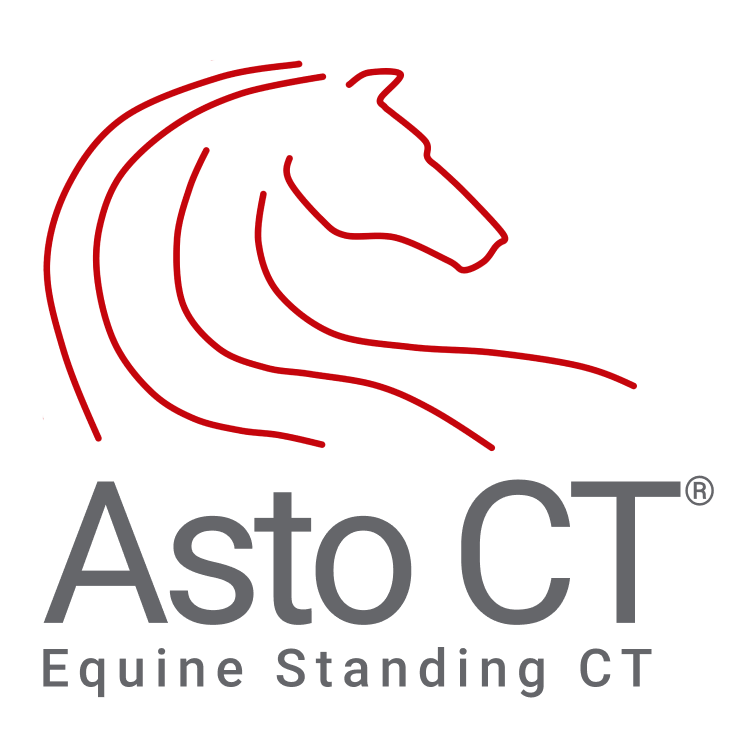A Forward-Thinking Approach to Equine Healthcare: The Equina® by Asto CT
A Safer, Innovative Alternative to Traditional CT Procedures
In the world of equine diagnostic imaging, safety is paramount for veterinarians and horse owners alike. Traditional CT scans often require general anesthesia, a process that, while generally safe with experienced veterinary teams, introduces risks related to anesthesia and recovery. The Equina® CT scanner, developed by Asto CT in Middleton, WI, revolutionizes this approach by offering a standing CT scanner that eliminates the need for anesthesia in many cases. With the Equina, horses stay in a natural, comfortable standing position under mild sedation, offering a safer, stress-free alternative that meets the veterinary field's demand for advanced imaging technology.
Equipped with helical fan-beam technology, the Equina scanner delivers high-resolution images of critical areas such as the limbs, skull, and cervical spine. The scanner’s gantry rotates smoothly around the standing horse, providing a quick, comfortable experience for both the horse and vet techs. By enabling the horse to stay standing, the need for complex positioning under anesthesia in dorsal or lateral recumbency is removed, easing the process and simplifying the workflow for veterinary staff.
Picture captured during training at Wisconsin Equine Clinic and Hospital in Oconomowoc, WI.
A Focus on Safety and Comfort
Safety has been at the heart of Asto CT’s mission since the start. In developing the Equina, Asto CT incorporated a range of innovative safety features. Specialized padded flooring helps absorb impact and ensure stability, while a toe shield prevents any possibility of limb entrapment during scanning. The scanner is also equipped with collision-sensing technology, which prevents the machine from making contact with the horse by stopping any movement if it detects proximity to the animal. Lead shielding further minimizes radiation exposure, allowing veterinary staff to remain in the room and closely monitor the horse throughout the scan. This thoughtful setup not only enhances safety but provides a sense of reassurance and control for everyone involved in the process.
Euthanized wobbler patient receiving a neck scan post mortem.
Expanding Applications with General Anesthesia
While standing CT is ideal for routine scans, some complex cases still require the benefits of general anesthesia for comprehensive imaging. For regions such as the caudal neck, full anesthesia enables a detailed, precise view essential for diagnosing conditions like neurologic disorders, cervical fractures, and intervertebral disc disease. The Equina scanner is designed to seamlessly support these specialized cases while upholding Asto CT’s high standards of safety and comfort. This versatility empowers veterinarians to make fully informed treatment decisions, regardless of the diagnostic complexity.
The Practicality and Precision of Standing CT
Debridement completed on top of the CT scanner.
Veterinarians see numerous advantages in using the Equina CT. Its sealed enclosure allows minor surgical procedures to be performed with the horse standing directly on the scanner, enabling real-time monitoring and imaging. This feature ensures precise instrument placement and improves diagnostic accuracy, making procedures faster and more efficient, allowing for quicker recovery.
Enhanced Radiation Safety
Radiation exposure remains a concern in equine CT imaging, especially with traditional CT systems, which emit high radiation levels that often require staff to leave the room. In contrast, the Equina CT’s low power levels and self-shielded design emits low-dose radiation, allowing veterinary staff to stay with the horse throughout the scan without compromising their own safety (link to AVMA radiation paper). This capability enables handlers to quickly respond to any unexpected patient movement, further enhancing the safety and comfort of the horse. Dr. Sabrina Brounts, DVM, DACVS, notes, “With the Equina, we can stay in the room and monitor the horse directly. There’s no need to step away, which aligns with our goals of providing the safest and most supportive environment.”
Peace of Mind for Horse Owners
For horse owners, the Equina CT offers a gentle alternative, using only light sedation and keeping the horse in a familiar stance, reducing stress and ensuring a smooth, efficient scanning process that takes about 30 seconds. Its streamlined approach provides a cost-effective solution without sacrificing diagnostic quality, making it a practical choice for quick, reliable information. Dr. Brounts adds, “This is a machine created by veterinarians for veterinarians, designed specifically with the horse’s safety and wellbeing in mind. It represents the best available technology for equine imaging.”
Warmblood mare receiving a hand-limb scan.
Shaping the Future of Equine Imaging
As Asto CT continues to innovate, the Equina CT scanner embodies the brand’s commitment to advancing equine healthcare by expanding diagnostic capabilities with safety at the forefront. Future advancements promise to enhance the scanner even further, ensuring unparalleled precision for veterinarians. The Equina CT scanner offers an unmatched combination of safety, efficiency, and flexibility, making it the most forward-thinking solution in equine imaging today.




